
| Volume 19, Issue 3 | March 21, 2017 |
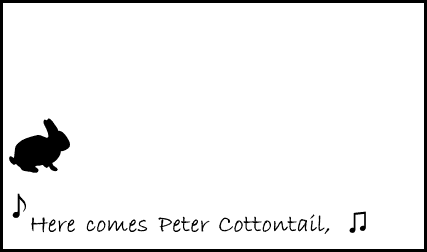
|
In this Issue:
|
Terrific Techniques for Likely Longevity

| Volume 19, Issue 3 | March 21, 2017 |

|
In this Issue:
|
Terrific Techniques for Likely Longevity
Just as in financial investing, there are no guarantees, but by now there are dozens of proven methods to improve the quality and length of the average person's life, and it seemed it might be both helpful and fun to pick among them a buffet of easy to apply ways to enhance the human experience in this most fundamental, existential manner. In short, we all must die, but maybe we can put off that moment and in a fashion that also leaves us feeling better. I highly endorse the main references for this piece. There one can find many other great strategies. What follows, in no particular order, are simply my personal choices of the best among them:
-Be a book reader. - In a recent Yale University study, several thousand people aged 50 or older were followed for twelve years. Two groups among them were defined by characteristics essentially the same except that one was composed of book readers and the other was made up of people who did not read books. The former group lived on average for two years longer than the other one. Analysis of the results showed that the book readers averaged over 3 hours of book reading weekly while the other group members might have had interesting hobbies but cared little for books. The book readers had a 20% lower mortality rate in the study period than the bookless folks.
-Have a warm blooded, four-legged pet. - Folks who have a furry friend, especially if it is a dog, tend to have longer lives, fewer heart attacks, less stress, more physical activity, and lower blood pressure than those who do not.
-Move more. - Almost any non-damaging physical activity will help. Those who exercise in a good aerobic workout four times a week and have strenuous conditioning exercise twice a week tend to do very well. On the seventh day, how about some dancing, singing, hiking in great scenery, rocking, gardening, mowing the yard, sex, or hide-n-seek and tag play with kids, grandkids, nieces, or nephews? Once extra movement is built into one's routine, a day may not feel complete without it, and the many benefits will soon speak for themselves.
-Be a little nutty. - People who eat a few nutritious nuts several times a week have shown a 23% lower risk of dying, in studies of people aged 55-69. As little a handful as 8 almonds, 5 pecan halves, or 6 cashews will do. Peanut butter, made from legumes, does not have the same effect.
-Additional servings of fruits and veggies, please. - Fruits and vegetables, particularly if organic and fresh or packed frozen, help fight cancers and heart disease, otherwise boost the immune system, can often be delicious, provide greater energy levels, slow down the aging process, and gram for gram are better for life expectancy than carnivorous fare.
 -Choose whole grains. - The average consumer who increases intake of whole grains via such options as barley, oatmeal, brown rice, or slices of whole grain bread can thereby reduce his or her death rate by up to 20%.
-Choose whole grains. - The average consumer who increases intake of whole grains via such options as barley, oatmeal, brown rice, or slices of whole grain bread can thereby reduce his or her death rate by up to 20%.
-Rest. - Not true for everyone, but in general people who habitually sleep less than 6 hours a day double their risks of heart attack or stroke. In a 25-year study, they also tended to have a 12% greater chance of dying, everything else being equal. Of course, it might have simply been because they also were more likely than their more rested peers to fall asleep at the wheel or walk in front of a bus.
-Drink plenty of Java. - People who drink more than one cup of coffee a day (that is, a total of 16 ounces or more) have less chance of diabetes, stroke, and certain cancers. One study found that drinkers of 24-40 ounces of coffee daily were at 15% lower risk of premature death.
-Please laugh. - Those who chronically lack mirth may not die laughing, but they do often meet their Maker sooner than folks who can enjoy funny pet videos, puns, cartoons, and hearing or reading other forms of joking or who can laugh at themselves on occasion. Seriously!
-Like it hot. - Hot peppers and other spices engender the production of endorphins which in turn help us have less inflammation, reduced pain, and better contentment overall. In one study, this led to a 13% lowering of participants' risks of dying.
-Take note of what's awesome. - Experiencing things that lead to our whispering "Wow!" at times, be they Beethoven, fantastic art, spectacular photography, cosmological phenomena, or amazing natural vistas here on Earth, may not merely be pleasurable in themselves but can build up our immune systems.
-Cultivate a good social network. - People who not only need but have people in their lives, from significant others to kids to other family and certainly friends, are not only the luckiest people in the world but live significantly longer than those who are lonely and have much more limited social circles.
-Take vacations. - Being too wedded to one's work can be deadly. Employed folks who vacation substantially less often than their peers on average are at far greater risk of heart attack.
-Have a passion. - Those who have the most rewarding lives tend to be those who look forward to a new day because of something cool they will be involved in or experiencing before their next bedtimes. Being a grandparent may do it for you, or having a new entrepreneurial venture or writing the great American novel, or, as my wife does, leading fauna surveys and finding and photographing new species on a regular basis. Yet, it need not be a dramatic or colorful addition to our lives. More "ordinary" joys, from painting to cooking to cleaning out the closet, learning about investments, making a rock garden, helping out at a food pantry, meeting a friend for lunch, going to a concert, seeing a good movie, telling others about a hobby we love, visiting a sick friend, or any of a thousand other ways we can have a purpose for the time we have to fill can offer us great meaning and both enrich and lengthen our lives. In a 2014 "Lancet" study, older people who woke up looking forward to something were 30% less likely to die over the 8.5 year period they were being followed than those without this sense of positive expectation. And in general, being a member of a community that works together on projects to help others or improve civic conditions can add several fulfilling years to one's life.
Here's to all of us finding our own best ways to fulfill our existences and, if we are fortunate, living well in our moments, however long we have to enjoy them!
Primary sources:
-A Chapter a Day: Association of Book Reading with Longevity. Avni Bavishi, Martin D. Slade, and Becca R. Levy in Social Science and Medicine, pages 44-48; September, 2016;
-50 Great Ways to Live Longer. in AARP.ORG/BULLETIN; March, 2017;
-Younger Next Year. by Chris Crowley and Henry S. Lodge, M.D., Workman Publishing, New York; September, 2007.
Visiting a ruined building is often a fascinating adventure. The familiar becomes alien when it is in a condition that we rarely experience. In a remarkably short time, a typical residence can transform into a unique sculptural edifice, with unexpected bits missing, sagging or tumbled about each other. Investigating the rubble of a once sheltering house is not just an engaging intellectual exercise; it is an emotional voyage. The realization that some barren, neglected dwelling was built, cared for, and lived in, is possibly one of the most dramatic juxtapositions a human can examine.
I've not explored nearly enough old structures to satisfy my curiosity. While they exist all around us, gaining access is not always a foregone conclusion. One place I saw when I was about 11 years old was right next door. An old ramshackle house on the lot behind ours had been the home for a family that obviously had very little money. The kids attended school with us, but were awkward, wore obviously ragged clothes and never seemed to fit in very well. They moved out very suddenly, overnight actually. After awhile, it was obvious that the place was deserted, so we satisfied our curiosity and had a look around. The door was not locked, and was, in fact, not even closed. It no longer fit into its frame. Standing in one room, I could see daylight between the top of the wall and the ceiling. The whole place was falling apart. Wall paper was peeling, curtains were torn, there were holes in walls, debris lay all about, and everything smelled musty. It looked like it had been empty for years, and so it was amazing to me that up until a few days before, a whole family had lived there. Within a month, it had been torn down and construction began on a new house.
One thing I have noticed is that stone walls hold up much better than wood. No big surprise, really. There is a kind of dilapidated dignity to brick chimneys, stone columns and cement buttresses, akin to remnants of castles, forts or cathedrals, but wood-framed houses descend into pathetic chaos with no sense of decorum. It is uncanny how quickly unmaintained wooden structures rot away. In just a few years it is as if they have melted or been absorbed into the landscape. I am reminded of the differences between the majestic brick parapets of a forsaken mansion on Cumberland Island, GA, and a derelict wooden farmhouse just outside of Austin, TX.
The island estate had belonged to a wealthy family and had been left permanently vacant because the property became a national park. In spite of the harsh coastal climate, the well-constructed masonry was only gradually eroding away. Chimneys and outer walls still towered above the overgrown gardens and lawn. Iron gates remained on their hinges and impenetrable metal grills secured low windows against intruders. Of course, the roofs and most of the wooden trim were gone, but the stately walls retained their noble character.
Although the frame house in Texas had been vacant for a shorter period, it had no durable stone sections, and the only part that still stood straight was the brick chimney. It's reason for becoming obsolete was simply that a more modern home replaced it on the large property. Instead of a sense of substantial history, the falling structure evoked a more gloomy sensation, like that of a toy simply outgrown and tossed in the rubbish.
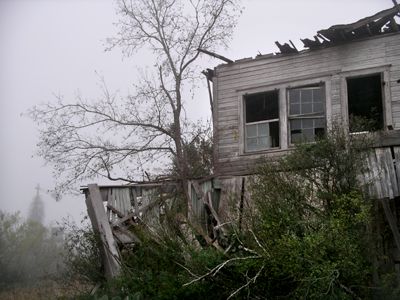 Whatever the background story, the setting, or the state of disrepair, there is a strange magnetism about abandoned buildings. Maybe it's the same sort of morbid curiosity that draws one to look at a corpse, automobile wreck or burning building. Or maybe there is a kind of visual poetry in the play of light across dusty surfaces and broken beams. The odd, sort of cinematic backdrop to an imagined story that is now lost can inspire poignant, enigmatic or disquieting ideas.
Whatever the background story, the setting, or the state of disrepair, there is a strange magnetism about abandoned buildings. Maybe it's the same sort of morbid curiosity that draws one to look at a corpse, automobile wreck or burning building. Or maybe there is a kind of visual poetry in the play of light across dusty surfaces and broken beams. The odd, sort of cinematic backdrop to an imagined story that is now lost can inspire poignant, enigmatic or disquieting ideas.
Even if the location is unfamiliar and past inhabitants are nameless, encountering a staircase leading to nowhere, a bathroom sink sticking out of a second story floorless corner, or a door that opens to a wall of debris covered in vines can be as startling as the final chapter of a really first-rate mystery novel. Then there are the little details: a pile of silverware on a countertop, a doll lying under a rocking chair, a water glass perched on a window sill, a comb on a clothes chest, or an open book on an otherwise bare table. One cannot help but speculate on the narratives behind each item and what caused them to be left behind. With or without additional personal items, it is impossible to not compare the eerie surroundings with the very similar situations in which we spend a good portion of every day. We work very diligently to create and maintain the structures of our lives, including our most intimate spaces, which are the homes in which we live.
Really old houses, sheds and barns are less disconcerting than equally decrepit modern equivalents. Distance in time equals a loss in empathy, so we are more likely to just observe and not ponder when it comes to a 150 year old abode. But a ruined home only a few decades old, with modern plumbing, fixtures, tiles and curtains gives more of an impression of disaster or failure than an ancient building simply reaching the end of its useful life. The time frames involved depend on an individual's experience. 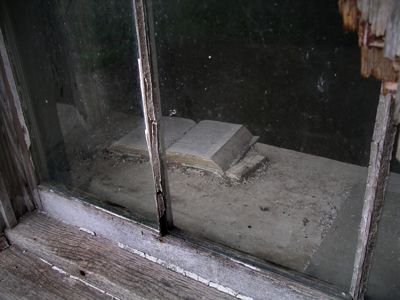 I grew up in a sturdy, well-constructed house that was about 100 years old. I saw how we repaired and replaced the parts that needed it. The contrasts, such as between the thick dark wood embedded with handmade square nails in the walls, and the fiberglass laundry tub adorned with a shiny chrome-plated brass faucet, were replayed scores of times in all aspects of our home, until it felt perfectly natural to layer decade after decade upon each other. I'm not even sure if it disturbs me more to see an old or relatively new home in decay. Whatever the age, a disintegrating building is both unsettling and intriguing.
I grew up in a sturdy, well-constructed house that was about 100 years old. I saw how we repaired and replaced the parts that needed it. The contrasts, such as between the thick dark wood embedded with handmade square nails in the walls, and the fiberglass laundry tub adorned with a shiny chrome-plated brass faucet, were replayed scores of times in all aspects of our home, until it felt perfectly natural to layer decade after decade upon each other. I'm not even sure if it disturbs me more to see an old or relatively new home in decay. Whatever the age, a disintegrating building is both unsettling and intriguing.
One emotion that inexorably crops up around discarded dwellings is sadness. The melancholy loneliness is both a bit depressing and, in a way, captivating. Neglect of anything is inherently a bit distressing, as we can all relate to that unwanted feeling in some form, and when it is attached to age, then it becomes even more profound. It's as if we are witnessing the final portion of our own inevitable timeline. Sort of like looking into a bleak future, but one that is comfortably distant, and easily dismissed as not predestined. The sensations of old age, death, and The End are all there, but, as with viewing a movie, it's not an immediate issue, so there is a subtle feeling of reprieve when we leave the premises and return to our more vital world. One of the benefits of delving into the somewhat shadowy realm of obsolescence is the relief of resurfacing to the bright, vibrant present.
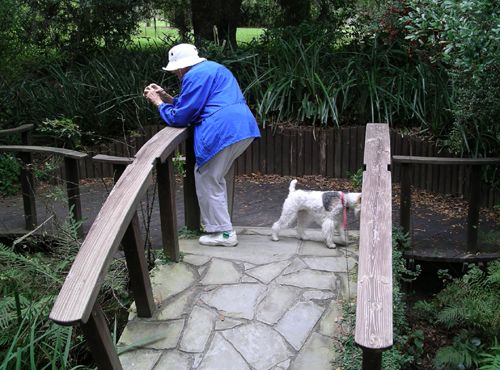
Sometimes even sentient beings who are capable of understanding a photographer's instructions can get so distracted that they completely forget the task at hand. Larry, Val, and their dog, Periwinkle, were visiting in Ocala, FL, with Evelyn, Val's mother, during the Thanksgiving holiday in 2005. As is often the case, a visit to Kanapaha Gardens in Gainesville was on the agenda, as it is one of the few gardens that is both a fantastic botanical showcase AND dog-friendly. One highlight of the grounds is a demonstration water purification system that incorporates a series of ponds and streams allowing the water to move through lush vegetation in order to remove contaminants. The habitat is home to fish, turtles, snakes and alligators, and never gives the impression of being a wastewater treatment facility. Instead, it features lily pads, waterfalls and a lovely little bridge that provides a perfect backdrop to photos, but only if you can get your subjects to focus for a bit. All seemed to be going well, but before Val could snap the shutter, Evelyn saw a bird at the waterfall that she wanted to photograph and Peri saw something equally tantalizing off in the other direction. So it goes.
![]()
| (The Terra Tabloid is a venue for the discussion of issues pertaining to the past, present, and future of our planet and human interaction with it.) |
Birds accidentally flying into communication antennae, mostly at night, account for "Towerkill." In the U.S. alone, estimates of those dying annually in this way range from 5 to 50 million. Birds near towers die in a variety of ways. Some do not see the guy wires that help support and stabilize the framework. Others lose their navigation sense due to the effects of nocturnal illumination. Thus disoriented, they may circle the towers repeatedly, even smashing into other fowl. They also of course hit the tower superstructures in large numbers.
It is unknown just how artificial lighting disrupts birds' direction-finding, but the results are real enough. A Michigan Department of Natural Resources project noted that over 2300 birds were killed at a single tower in one night. Large numbers of the bird deaths occur among endangered species. Roughly 9% of yellow rails, for instance, are killed each year by collisions with the towers. 97% of tower related deaths are songbirds, especially warblers.
 To help pilots avoid collision with them, the Federal Communication Commission (FCC) generally requires such lighting on towers above 199 feet. Many reach 1000 feet into the air. Shorter towers as well must have lighting in the proximity of airports. Well over 100,000 such high antennae exist in this country. Many thousands more are added annually.
To help pilots avoid collision with them, the Federal Communication Commission (FCC) generally requires such lighting on towers above 199 feet. Many reach 1000 feet into the air. Shorter towers as well must have lighting in the proximity of airports. Well over 100,000 such high antennae exist in this country. Many thousands more are added annually.
For vast numbers of bird deaths, a solution exists. Studies have shown that up to 70% of avian mortality would be eliminated if steady tower lights were changed to blinking red lights. The Federal Aviation Administration, meanwhile, has confirmed that blinking lights would not keep pilots from noticing the towers. The change would make economic sense as well, for operators of tall communication antennae currently must spend substantial time and money in extra maintenance incurred from collisions between birds and the broadcast or cell phone towers.
Thanks to such findings, the FCC in 2015 altered its regulations to mandate that new towers be illuminated only with flashing lights. Older towers, by far the majority, were not affected by the requirement, but it was permitted that they be changed to the new lighting arrangements too.
Volunteers as well as FCC employees are now going to the folks who run these older antennae and encouraging the transition to more bird-friendly tower lighting, in the process saving much in maintenance overhead and millions of avian lives.
Primary sources:
- Communication Towers Pluck Birds David Biello in scientificamerican.com; January 29, 2013;
- How to Make Broadcast Towers More Bird-Friendly. Ben Thorp in npr.org; January 24, 2017;
- Towerkill. in wikipedia.org; last modified January 22, 2017.
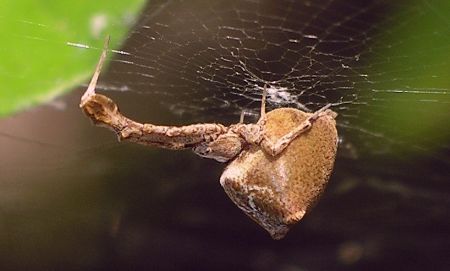
It is a well-known fact that almost all spiders have venom glands, which is why any species large enough to puncture human skin can give a rather painful bite in self-defense. The feather-legged orbweaver (Uloborus glomosus), however, belongs to the single family that makes that qualifier about the venom necessary. These spiders have no venom glands in their chelicerae. It's sort of hard to imagine just how anyone figured that out since they are so small that they couldn't give a significant bite anyway. The family contains many more species in the tropics, but in our area there are just a few, with this one being extremely common. It is a very small spider (usually around 5mm or less) and its tiny horizontal webs are easily overlooked.
Most spiders that catch their prey in a web wrap it with silk and deliver a fatal bite. Once the victim is dead, the spider can settle down to the long task of liquefying and slurping it up. Feather-legged orbweavers do the wrapping part, but then they just spit up digestive juices onto their meal, wetting it without biting, so death does not come quickly as the insect slowly suffocates. I actually had the chance to check this out. While I was photographing a small plant bug on our back porch, it flew away, becoming entangled in a Uloborus web, where the spider promptly wrapped it up. I looked at my photos on the computer and wasn't satisfied with the quality, so I went back out, took the bug out of the web and carefully unwrapped it. Sure enough, it was still alive and acting pretty normal, so I took more shots. I got better photos, the insect gained a reprieve, but the spider lost that meal.
I was trying to come up with a clever title taking into account the imminence of both the new season and Easter. What I could came up with, about spring cleaning our portfolios, nest eggs hatching with resurrected profits, baskets of sweet yielding assets, or bounties of bunny brought bargains, seemed too awkward and cumbersome. Not wanting to strain any similes or mangle my metaphors, suffice to say, then, that if in the fresh thaws we feel an urge to flow like new sap up investment money trees, here are a few melt-in-your-mouth delicious and colorful goodies with which we might set off to best advantage new bonnets or handsome duds and fill with loot our tax time coffers to boot.
The table cites companies chosen for their lower than average risk, greater than normal profit potential, and atypically generous dividends. Even after three Federal Reserve interest rates hikes over the past year or so, bonds are not yet offering much incentive for purchase. U.S. 30-year Treasuries pay just 3.4% as of this writing (3/17/17), and if one were to wait those three decades to sell, inflation would probably in the interim have left one's purchasing power below its starting value. Not so with the indicated stocks. They and others like them, taken as a group and on a total return basis, are likely to double one's investment about every five years. Yet if it is primarily income one needs, they pay an overall yield of 4% a year. Held long-term, some of these stocks will probably increase their dividends as a percentage of the initial investment. However if desired this strategy is easily renewable. After the portfolio has been held a year or so, assets now providing lower dividends (for instance, because the stocks have gone up in price) can be replaced with new superior dividend stocks that, like these, offer excellent potential, safety, and income.
| Company | Ticker Symbol | Recent Price | Yield |
|---|---|---|---|
| GlaxoSmithKline | GSK | $1689.02 | 4.8% |
| Novartis | NVS | $75.06 | 3.1% |
| Novo Nordisk | NVO | $33.73 | 2.4% |
| Phillips 66 | PSX | $78.51 | 3.2% |
| Qualcomm | QCOM | $58.22 | 3.6% |
| Royal Dutch Shell, Class B shares | RDS/B | $53.96 | 6.8% |
| T. Rowe Price Group | TROW | $71.18 | 3.2% |
| Teva Pharmaceutical Industries | TEVA | $33.65 | 3.5% |
| Total | TOT | $49.20 | 4.5% |
| Verizon Communications | VZ | $49.36 | 4.7% |
If a person is not keen on selecting his or her own securities, parameters of this sort can readily be conveyed to a trusted financial consultant. Just indicate a preference for common stock shares in companies with sound financial security, fatter than usual yield, and competitive growth potential with which to periodically replace those in the portfolio that no longer possess these characteristics.
| |||||||||
|
We've just passed the Vernal Equinox and, with ample rains here in central Texas, the wildflower season is in full swing. Although our planet is experiencing one new record high annual average temperature after another, this brief moderate season is a delightful interlude. Take the time to bask in the natural beauty of the verdant new growth and enjoy the pleasant sensation of a cool breeze. We will only too soon be dragging ourselves through another hot and oppressive southern summer.
|
| For others who may have chanced upon this site, larvalbug bytes is a monthly family-and-investment newsletter, put out by an old codger and sweet thing, with sometimes a little help as well from our engaging pooch, Peri. We invite readers' comments by and would also be happy to readers when new issues are published. Articles and stories from back issues are available in our archives. |

|
Copyright © 2017 by LARVALBUG
"Easter Fleas" and larvalbug web design by Valerie.
![]()